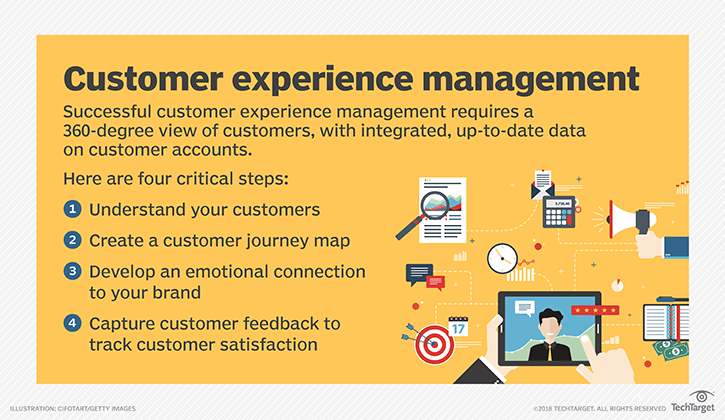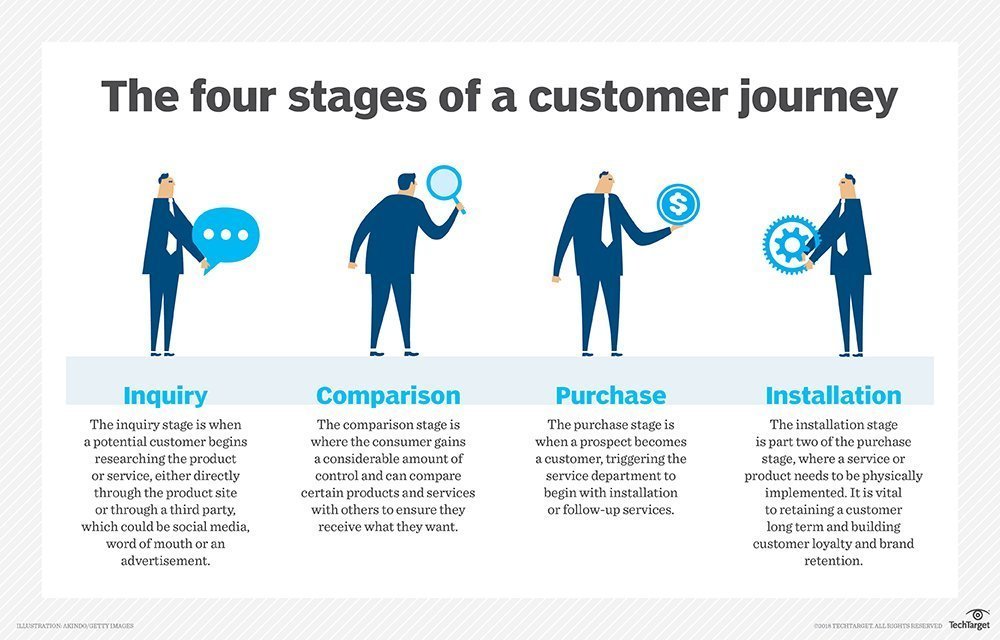Customer Experience Management (CEM or CXM)
Customer experience management (CEM or CXM) is the collection of processes a company uses to track, oversee and organize every interaction between a customer and the organization throughout the customer lifecycle.
The goal of CEM is to optimize interactions from the customer’s perspective and foster customer loyalty. To manage the customer experience, a company needs to create a customer-centric strategy that encompasses all interactions.
How to create a good customer experience
CEM (or CXM) requires companies have a 360-degree view of customers, with integrated, up-to-date data on customer accounts. There are four critical steps to creating a successful customer experience strategy:
- Understand your customer. The first step in building a customer strategy is understanding customers’ needs and behaviors and creating customer segmentationbased on these factors.
- Create a customer vision. Once the target audience is identified, the next step is to create a customer journey map. This helps identify customer touchpoints and anticipate how customers will interact with the product or service and could help customer retention down the road.
- Develop an emotional connection. This step involves creating a brand personality that evokes emotions and connections for a customer and helps establish a relationship between the customer and the company.
- Capture customer feedback. It is important to measure customer satisfaction in real time. Customer feedback can help the company track customer perceptions, enable quality monitoring and measure the success of the customer experience strategy.

The customer experience journey
The customer journey includes interactions and touchpoints through traditional channels, such as website purchases, phone calls and live chat as well as social media, text and other emerging communication mediums.
With more communication channels comes greater complexity. A customer journey map allows companies to identify customer touchpoints throughout the customer lifecycle. This helps a company to create a customer experience based on predictable customer needs and behaviors. This approach also enables a business to review and streamline its processes throughout the customer journey, which can improve customer satisfaction.

CXM management techniques
Companies rely on business intelligence and customer data analytics tools to learn how to market and sell to customers in a more personalized, one-to-one fashion.
Personalization strategies include new technologies, such as mobile marketing, location-based services and beacons, which help companies identify where customers are and market to them in real time. In some cases, the data can help companies give consumers pointed information that may or may not be related to a discrete purchase. For example, a stadium might use location-based services to inform consumers about which concession stand is proximal and less-busy.
Companies also use emotional analytics to gauge whether customers benefit from their interactions with the brand. Emotional analytics software can help analyze the success of a variety of operations that are related — but potentially tangential to — customer service, such as inventory management or supply chain management.
Knowledge management systems are also important tools for seamless customer service. Agents can use these systems to look up product information and customer interactions with other products. Agents can also combine this information with customer data and inventory information to provide customers with account information, product education and inventory.
There is more incoming data to process from more sources than ever before, and this data needs to be integrated with existing customer account data. The ability to combine customer relationship management (CRM) system data with financials, ERP and inventory management, as well as real-time data on social platforms, can be challenging.
CRM platforms from vendors such as Salesforce, Microsoft, SAP and Oracle attempt to bridge the gaps between communication channels to make database integration easier. These providers support integrating sales, marketing and service data as well, so customer information isn’t siloed.